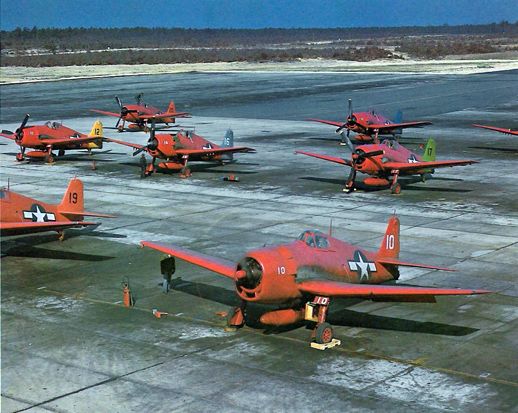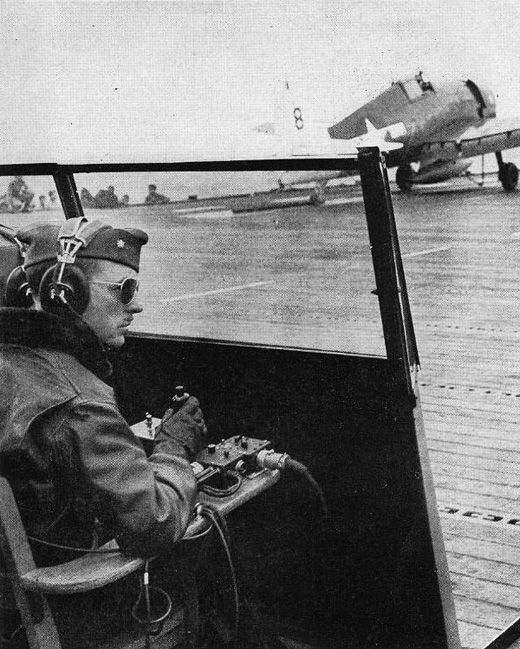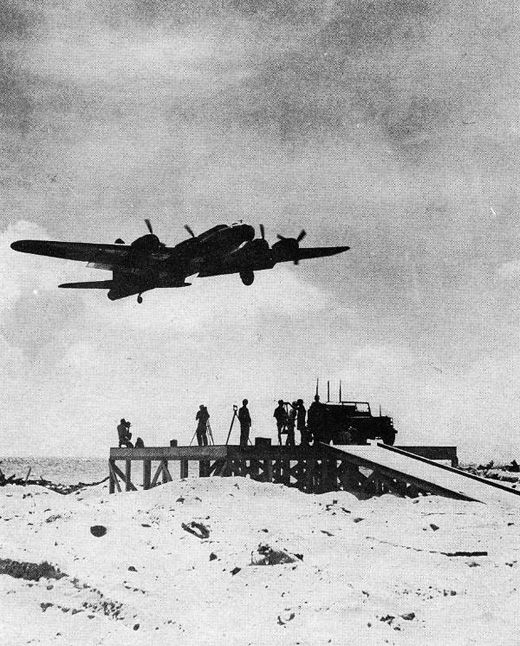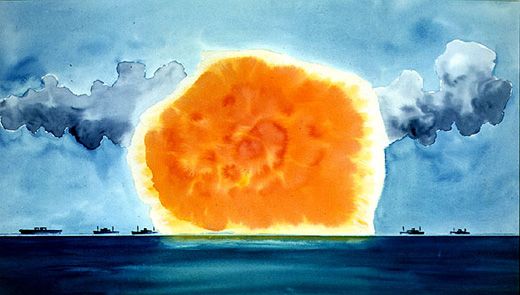Were drones used in the Bikini bomb tests?
/https://tf-cmsv2-smithsonianmag-media.s3.amazonaws.com/filer/Crossroads-Baker-blast-631.jpg)
Richard Gewin of Oklahoma City writes in with a question about Operation Crossroads, a pair of U.S. nuclear weapon tests conducted in July 1946 on Bikini Atoll in the Marshall Islands. Gewin, who was an electronics instructor at the Naval Air Technical Training Center at Ward Island, Corpus Christi, Texas, when the Navy was seeking volunteers for the tests, asks about the Navy drones that sampled radioactive fallout in the atomic clouds.
Both the Navy and the Army Air Forces flew remote-controlled drones during Crossroads, a joint undertaking to see how much damage Navy ships, equipment, and material would incur in a nuclear blast. It took a sizeable contingent to find out: 42,000 men, 242 ships, 156 airplanes, 750 cameras, 25,000 radiation recorders, 5,000 pressure gauges, and four TV transmitters. Among the participating aircraft were Navy Grumman F6F Hellcats and Army Boeing B-17 Flying Fortresses, which served as unmanned reconnaissance observers.
The first test on July 1, called Able, was an air drop explosion from a B-29 Superfortress, Dave’s Dream, on a 90-ship target fleet. After just eight minutes, a B-17 drone entered the mushroom cloud at 24,000 feet, followed a few minutes later by three other B-17 drones at 30,000, 18,000, and 13,000 feet. The Navy, meanwhile, sent in three F6F drones assigned to the carrier Shangri-La at altitudes of 20,000 feet, 15,000 feet, and 10,000 feet. All the drones were remotely operated by pilots flying in similar aircraft.
The drones collected air samples while their automatic cameras took photographs before returning to base (Enewetok for the B-17s, Roi Island off Kwajalein for the Hellcats). The samples were sent to Kwajalein for analysis. No manned aircraft flew over the center of the blast, called Zeropoint, until four hours later, although manned boats were on the scene after two hours.
Drones were also flown after the second test, Baker, on July 25, which was an underwater shot suspended from a target ship in Bikini’s lagoon. One B-17 drone, which flew directly over Zeropoint at detonation, had its brakes damaged in the blast and overran the runway at Enewetok, but suffered only minor damage. The Hellcat drone fleet had a loss when, shortly before Able, one went out of control and crashed on Roi.
The use of drone airplanes for the tests was “a unique and impressive feat” that the Army Air Forces believed advanced the science of drone operations by a year or more, wrote William Shurcliff in Bombs at Bikini, the official report on Operation Crossroads.
“To be sure, a few war-weary B-17s had been flown without crews during the latter part of the recent war, but they and their cargoes of explosives were deliberately crash-landed,” Shurcliff wrote. “Also, a few B-17s had been landed by remote control; but pilots were aboard, ready to take over control in case of trouble. Operation Crossroads was the first operation in which takeoff, flight, and landing were accomplished with no one aboard. The feat was an impressive one: many experts had thought it could never be accomplished with planes of this size.”



